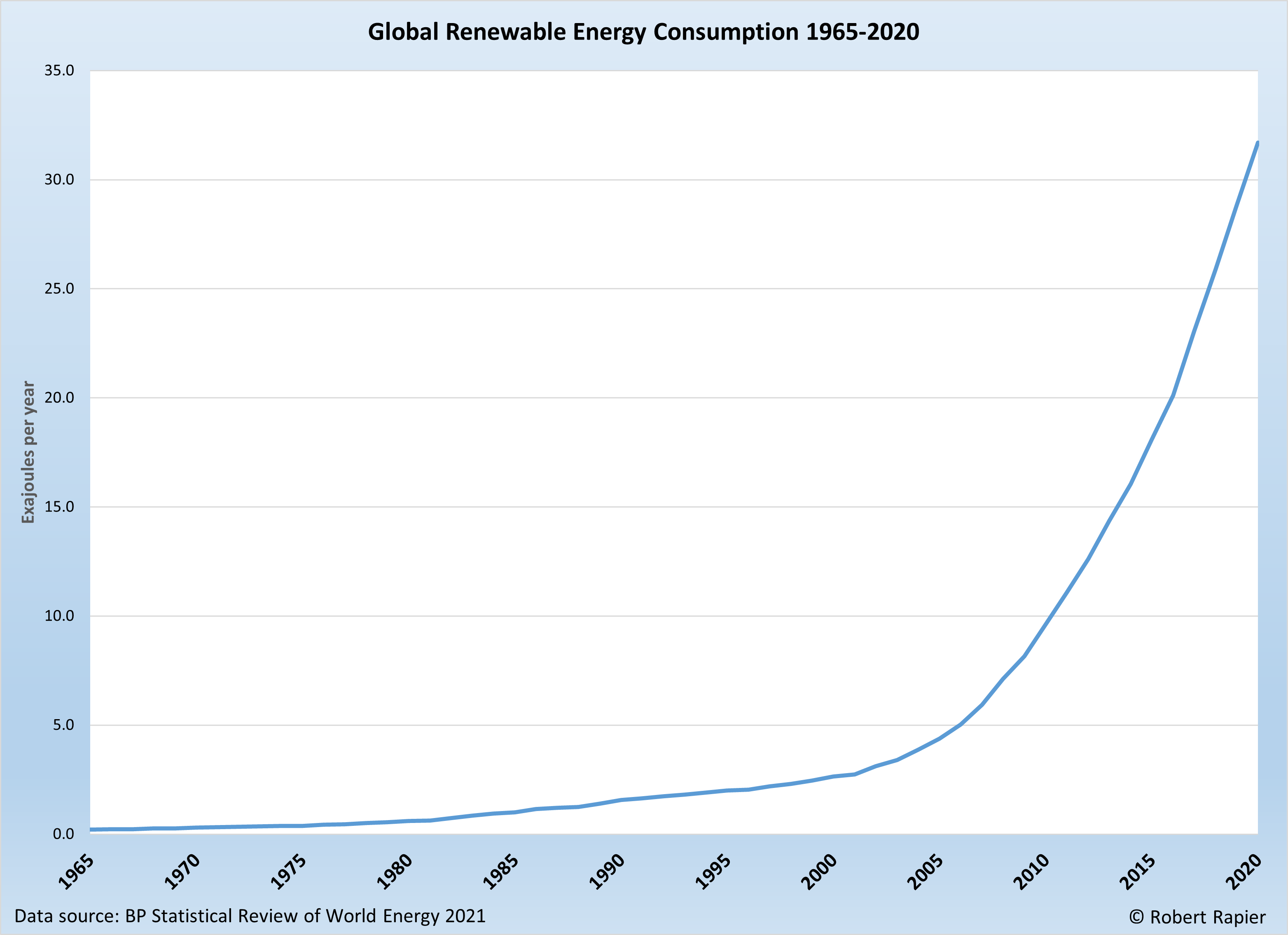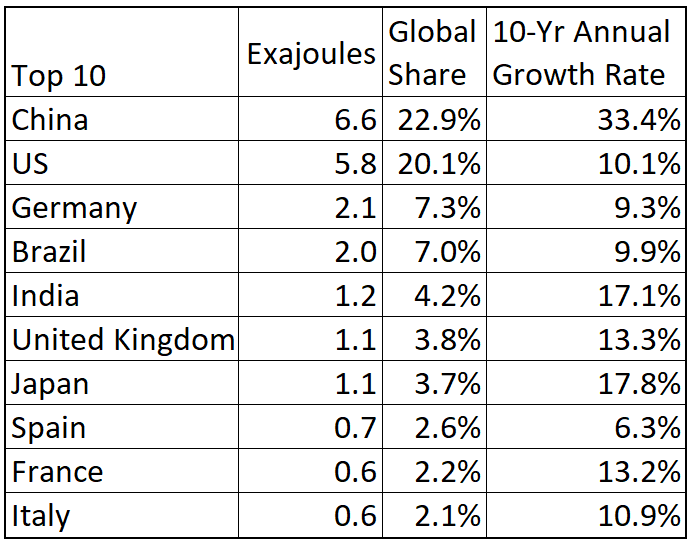The is the sixth article in a series on BP’s recently-released Statistical Review of World Energy 2021. Previous articles were:
- Highlights From The BP Statistical Review Of World Energy 2021
- A Record Decline In Carbon Emissions
- The U.S. Remained The World’s Top Oil Producer In 2020
- The U.S. Maintains Its Natural Gas Dominance
- U.S. Coal Consumption Falls To 60-Year Low
Today, I want to cover renewable energy.
Renewable energy was the one category that bucked the global trend of declining energy consumption in 2020. Despite the 4.5% decline of primary global energy consumption — the largest since World War II — global renewable energy consumption grew by 9.7% in 2020. That was a slight decline from its 12.2% pace the year before, but it’s remarkable given how significantly the pandemic impacted total energy demand.
Over the past decade, renewable energy consumption has grown at an average annual rate of 13.4%. Renewables were the only category of energy that grew globally at double digits over the past decade.
For perspective, in 2010 the world consumed 9.6 exajoules of renewable energy. In 2020, that had tripled to 31.7 exajoules.
 The “Renewables” category above consists of wind power, solar power, biofuels, geothermal energy, and power produced from biomass. The report further breaks down renewable energy consumption into just power production (i.e., without biofuels), and that accounts for 88% of all renewable energy consumption.
The “Renewables” category above consists of wind power, solar power, biofuels, geothermal energy, and power produced from biomass. The report further breaks down renewable energy consumption into just power production (i.e., without biofuels), and that accounts for 88% of all renewable energy consumption.
The Review reports “Hydroelectricity” as a separate category. That’s because hydroelectricity represents a mature category of energy production that is growing globally at a much slower rate than modern renewables like solar power. Global hydropower consumption in 2020 was 38.2 exajoules, which is still more than the category that contains wind and solar. However, the 10-year average annual growth rate for hydropower is only 2.1%, versus 13.4% for the other renewables.
Globally, hydroelectricity represented 6.9% of the world’s primary energy consumption in 2020, versus 5.7% for modern renewables.
Within the Renewable Power category, wind (50.6%) and solar (27.2%) accounted for most of the consumption. Although wind consumption maintains a healthy lead over solar consumption, solar power consumption continues to grow at nearly double the rate of wind power, and is likely to overtake it as the leading source of renewable power this decade.
China overtook the U.S. as the world’s top consumer of renewable energy in 2018, and continues to extend its lead. Not only does China have the top spot for overall renewable consumption, its growth rate over the past decade vastly exceeds all other members of the Top 10. Cumulatively, the Top 10 consumers accounted for 75.9% of the world’s renewable energy consumption in 2020.
 Despite the blistering growth rate of renewables, it’s important to keep in mind that overall global energy consumption is growing. Even though global renewable energy consumption has increased by about 21 exajoules in the past decade, overall energy consumption has increased by 51 exajoules. Increased fossil fuel consumption made up most of this growth, with every category of fossil fuels showing increased consumption over the decade (although coal’s growth was close to zero).
Despite the blistering growth rate of renewables, it’s important to keep in mind that overall global energy consumption is growing. Even though global renewable energy consumption has increased by about 21 exajoules in the past decade, overall energy consumption has increased by 51 exajoules. Increased fossil fuel consumption made up most of this growth, with every category of fossil fuels showing increased consumption over the decade (although coal’s growth was close to zero).
Thus, while renewables have helped reduce the growth of carbon dioxide emissions, global carbon emissions have grown due to the overall growth rate of fossil energy consumption. However, because of the decline in overall energy consumption in 2020, renewable consumption did grow faster than overall energy consumption. In turn, global carbon dioxide emissions decreased by a whopping 6.3% in 2020.
Follow Robert Rapier on Twitter, LinkedIn, or Facebook.